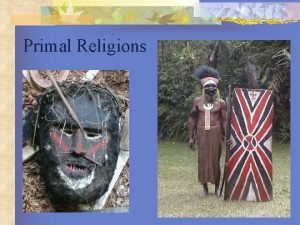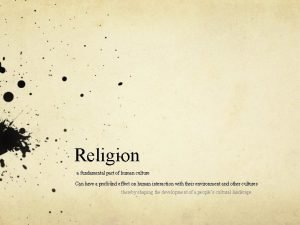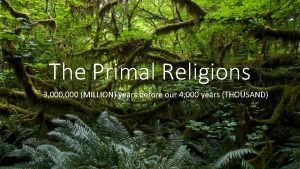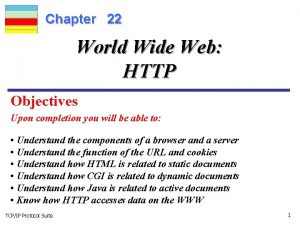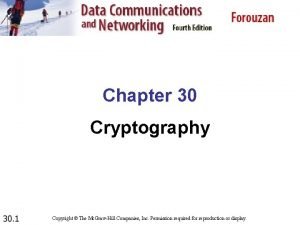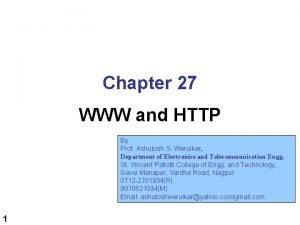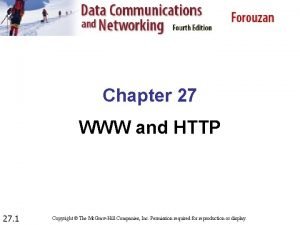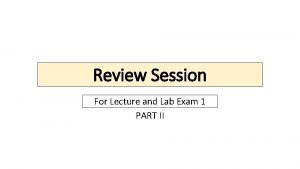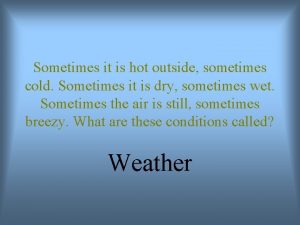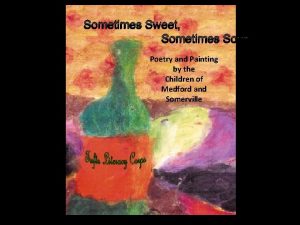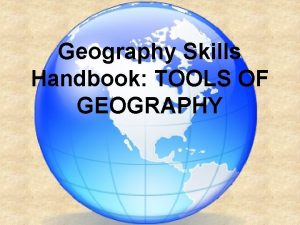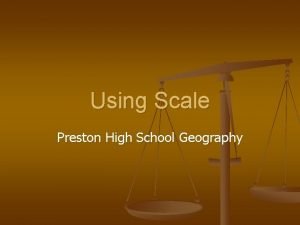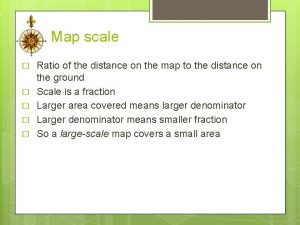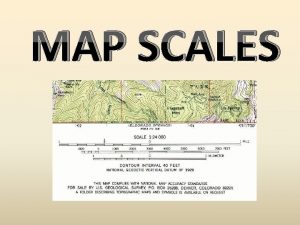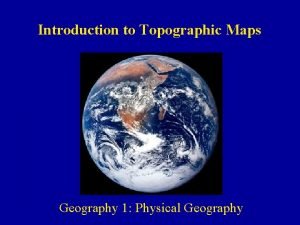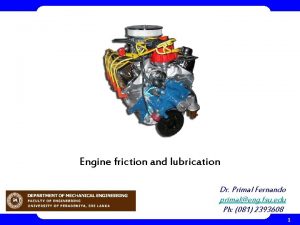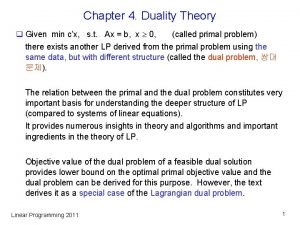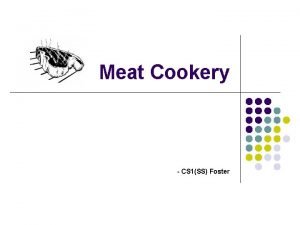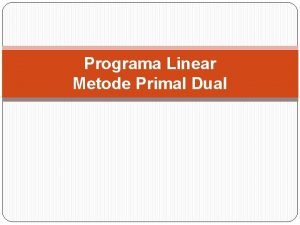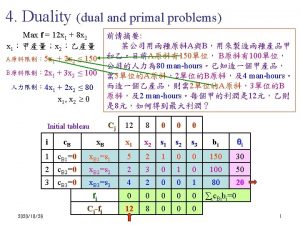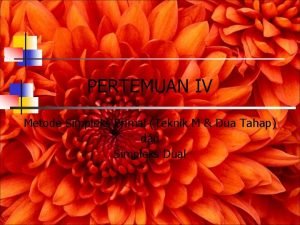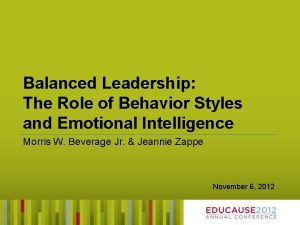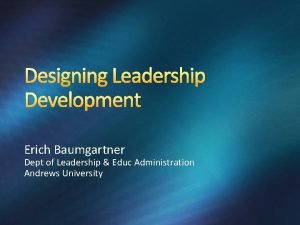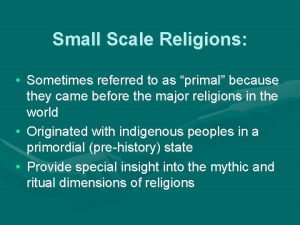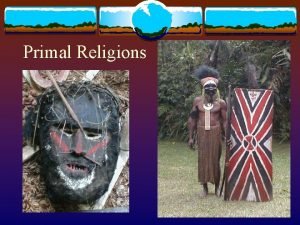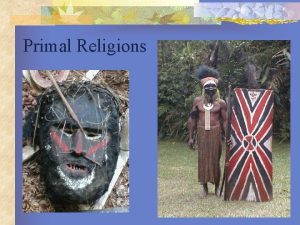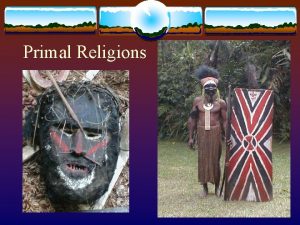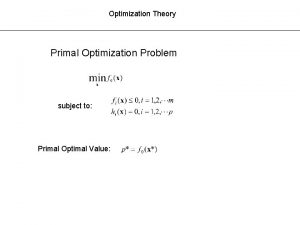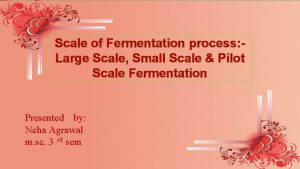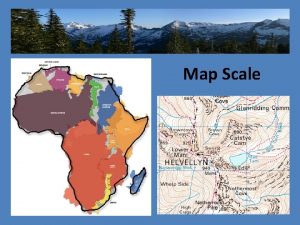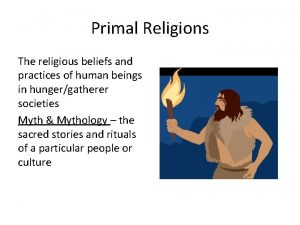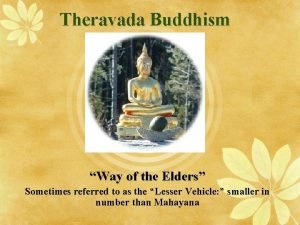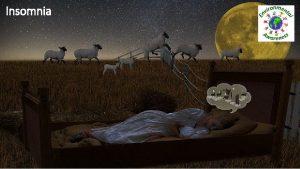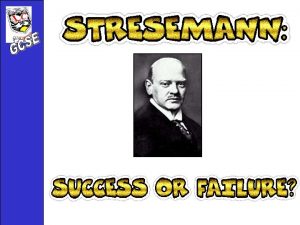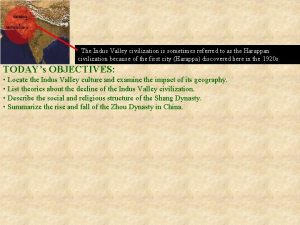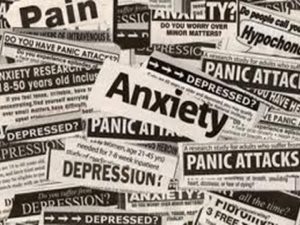Small Scale Religions Sometimes referred to as primal


























- Slides: 26

Small Scale Religions: • Sometimes referred to as “primal” because they came before the major religions in the world • Originated with indigenous peoples in a primordial (pre-history) state • Provide special insight into the mythic and ritual dimensions of religions

The Storytellers: • Generally traditions of non-literate people • Do not depend on scriptures or written teachings • Myths and stories are handed down from generation to generation

Tribal People: • Tend to be the traditions of tribal peoples • Usually live in small villages rather than cities • Exceptions would include the Yoruba and the Aztecs of Mesoamerica

Australian Aborigines • Native to Australia • Unaffected by outsiders until about 200 years ago • Early traditions remain in largely intact today

The Dreaming • The foundation of Aboriginal religion • Belief that the world was originally formless • Supernatural beings called Ancestors roamed the earth • Ancestors gave the world shape and created various forms of life

The Dreaming • Ancestors organized humans into tribes and gave language, territory, rules, and customs to the people. • Left behind symbols of their presence • Natural landmarks, rock paintings, etc…

The Dreaming • A mythic period of the Ancestors • Aborigines believe that the spiritual essence of the Ancestors continue to live today and the period continues to live on today. • Spiritual symbols are said to be filled with sacred power • Only certain people are allowed to visit the sacred sites

Sacred Sites • Approaching the sites the Aborigines re-enact mythic events of the Dreaming • Every notable landmark has great significance • Spiritual essence of the Ancestors is thought to live within each person • Unborn child receives the spirit of the Ancestor the mother contacts

Totem: • The natural form in which the Ancestor appeared in the Dreaming • May be an animal, a rock formation, or other landscape feature • Totemism: the system of belief and ritual based on totems

Three aspects of reality • Supernatural, human world, and world of nature all interrelated • Aborigines seek harmonious relationships between the three • Spiritual perfection

Aboriginal Religious Life • Recreating the mythic past of the Dreaming in order to receive sacred power • Ritual is essential; only through ritual that sacred power can be experienced • A myth behind every ritual

Taboo • Certain people are forbidden to participate in certain rituals • Violation of this principle sometimes results in the punishment of death • Men, women, maturity determine participation in rituals

Initiation: Symbolic Death, Spiritual Rebirth • Awaken the young to their spiritual identity and social position • Symbolic death of childhood • Boys and girls undergo initiation • Boys’ ritual is more elaborate than girls’

Male Initiation Rite • Takes place around 9 th birthday; lasted months • 2 lower teeth knocked out & buried • Circumcision with a stone knife • Wilyaru performed by the adult tribesmen • Struck w/ intent to form scars; symbolic death

Bull-roarer • Sacred instrument consisting of a piece of wood attached to a long string made from human hair • Recreates the sound of the deities and is forbidden for women to use

Initiation Rituals • The boy lived in the wilderness alone for months. • When the blood wore off his skin and wounds were healed he returned to the village • Much celebration…. . He became a man.

An African Tradition: The Yoruba • Representative of other African religions • Consists of about 10 million people • Yoruba is about 1000 years old

The Yoruba and Their Universe: • Live in the western regions of central Africa • Nigeria, Benin, Togo • Not a nation but a group with a common language and culture • Prefer living in cities • Ife center of Yoruba religion; Orisha-nla began to create the world

Yoruba Cosmology: • Reality is divided into 2 separate worlds: heaven and earth • Heaven: home to the deities and ancestors • Earth: home to human beings (descended from gods) and witches and sorcerers who must be controlled

Purpose of the Yoruba Religion: “…. to maintain the balance between the human beings of earth and the gods and ancestors of heaven, while guarding against the evil deeds of sorcerers and witches. ”

The Inhabitants of Heaven: • Supreme god: Olorun • Less powerful deities called orishas • Ancestors

Olorun, the High God: • Primary source of power • Original source of power • Does not become involved in human affairs • No shrines/rituals to him because he is a distant god

Orishas: • Lesser deities • Function as mediators between humans and Olorun • Hundreds exist • Can help or harm humans • Some worshipped by all; some by one family • Orisha-nal; Ogun

Esu • Dual nature both good and evil • Trickster figure: a mischievous supernatural being; disrupts the normal course of life • Mediates between heaven and earth • Has a place in every shrine and at every

Ancestors of the Living: • Deceased humans who have gained supernatural status • Have sacred power that can hurt or help • Worshipped like the orishas • Family and deified ancestors

Ritual Practitioners: • Mediate between gods and ancestors and humans • A specialist • Diviners: specialized priests who practice divination (one’s future) • Role passed from parent to child • Future is important
 Primal religions examples
Primal religions examples Primal religions
Primal religions The world's largest universalizing religion is
The world's largest universalizing religion is Primal religions
Primal religions Dynamic documents are sometimes referred to as
Dynamic documents are sometimes referred to as A transposition cipher reorders (permutes) symbols in a
A transposition cipher reorders (permutes) symbols in a Dynamic documents are sometimes referred to as
Dynamic documents are sometimes referred to as Http://27
Http://27 Which letter indicates the coronal suture?
Which letter indicates the coronal suture? Sometimes cold sometimes hot
Sometimes cold sometimes hot They say it only takes a little faith
They say it only takes a little faith They say it only takes a little faith to move a mountain
They say it only takes a little faith to move a mountain Sometimes sweet sometimes sour
Sometimes sweet sometimes sour Geography skills handbook
Geography skills handbook Small scale or large scale
Small scale or large scale Scale of a map
Scale of a map What is the definition of map scale
What is the definition of map scale Topographic map of bangladesh
Topographic map of bangladesh Primal fernando
Primal fernando Dr. primal fernando
Dr. primal fernando Cacca
Cacca Identify the following lamb cuts
Identify the following lamb cuts Metode primal dual dapat d diselesainakan dengan
Metode primal dual dapat d diselesainakan dengan Primal dual problem
Primal dual problem Metode primal simpleks
Metode primal simpleks Primal leadership summary
Primal leadership summary Primal pictures
Primal pictures
